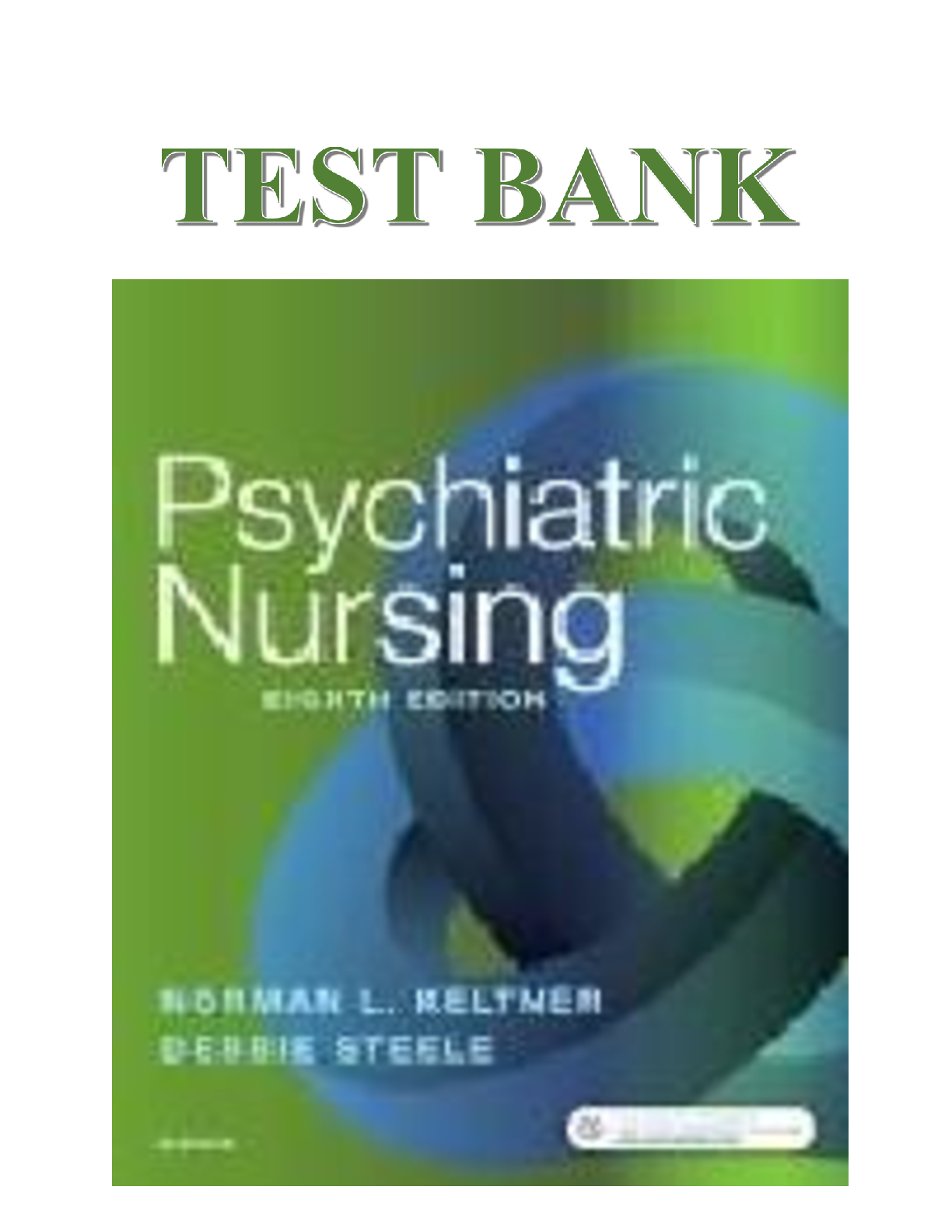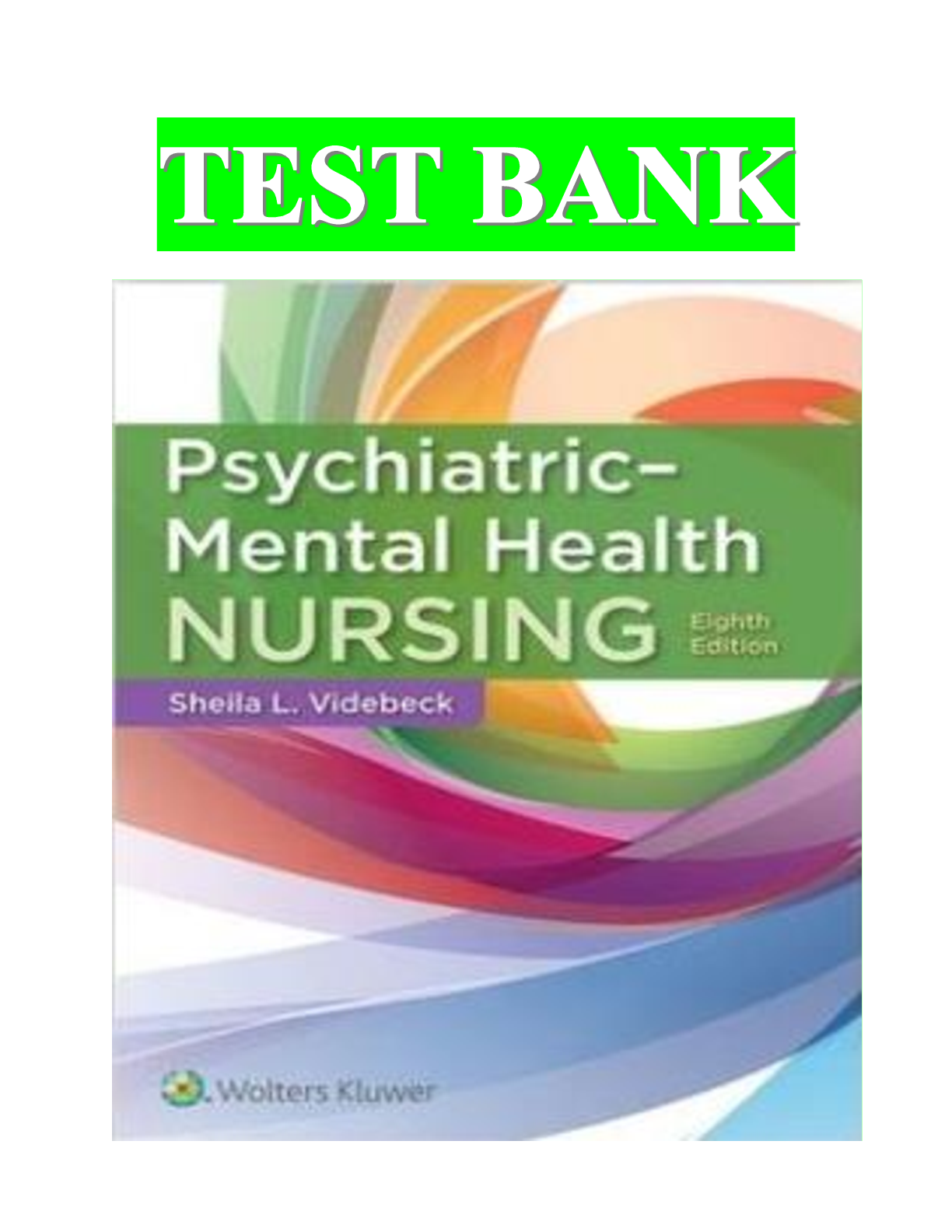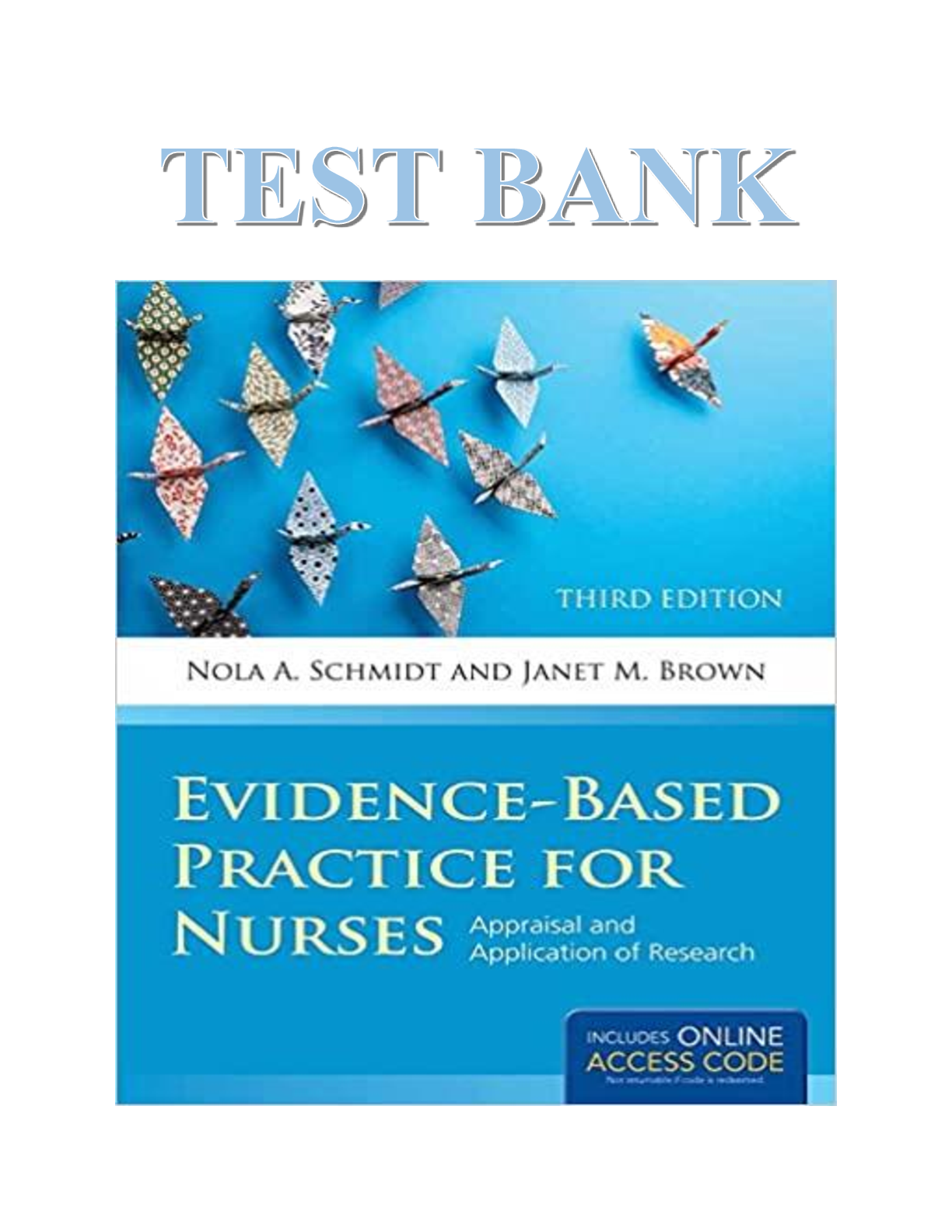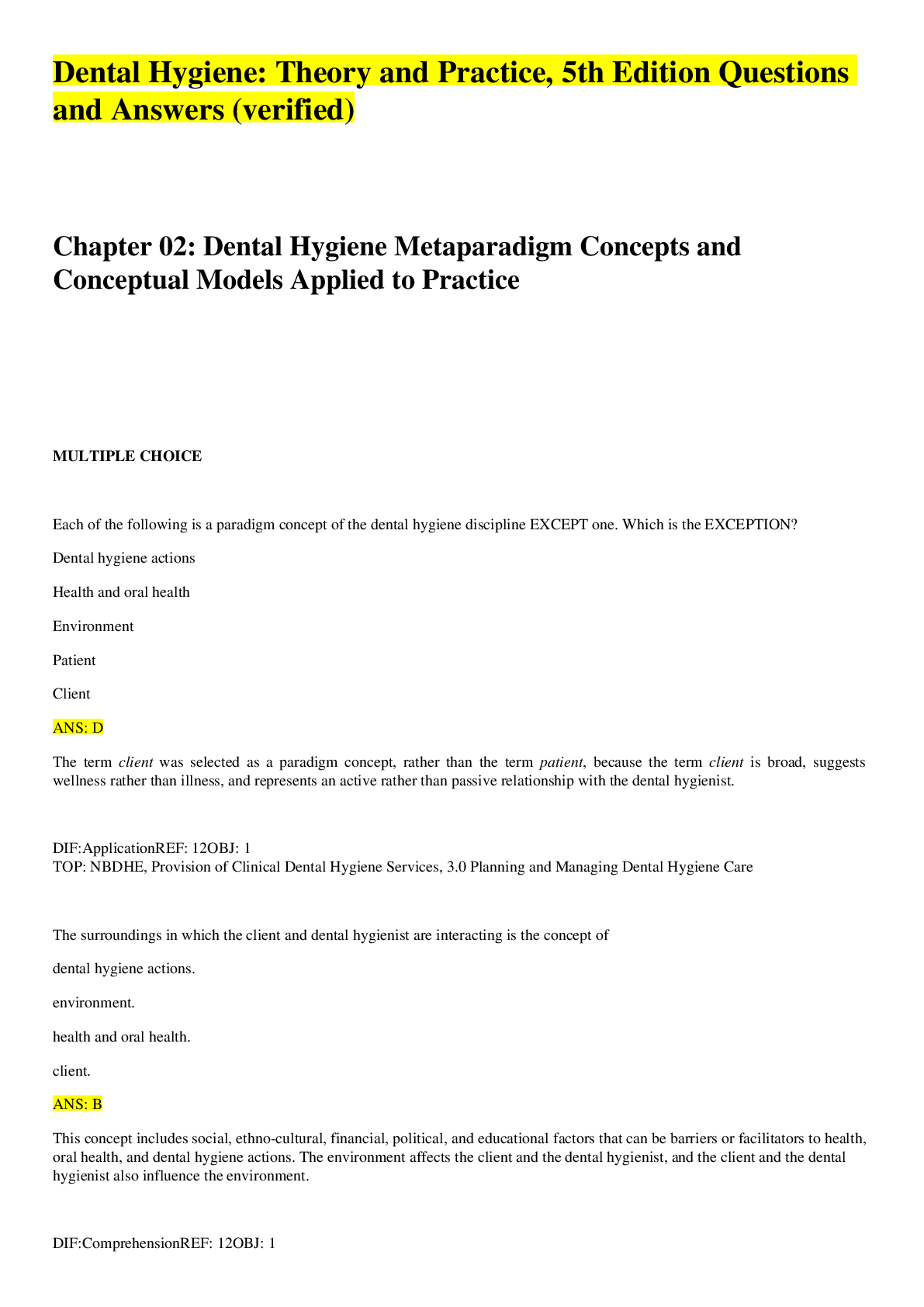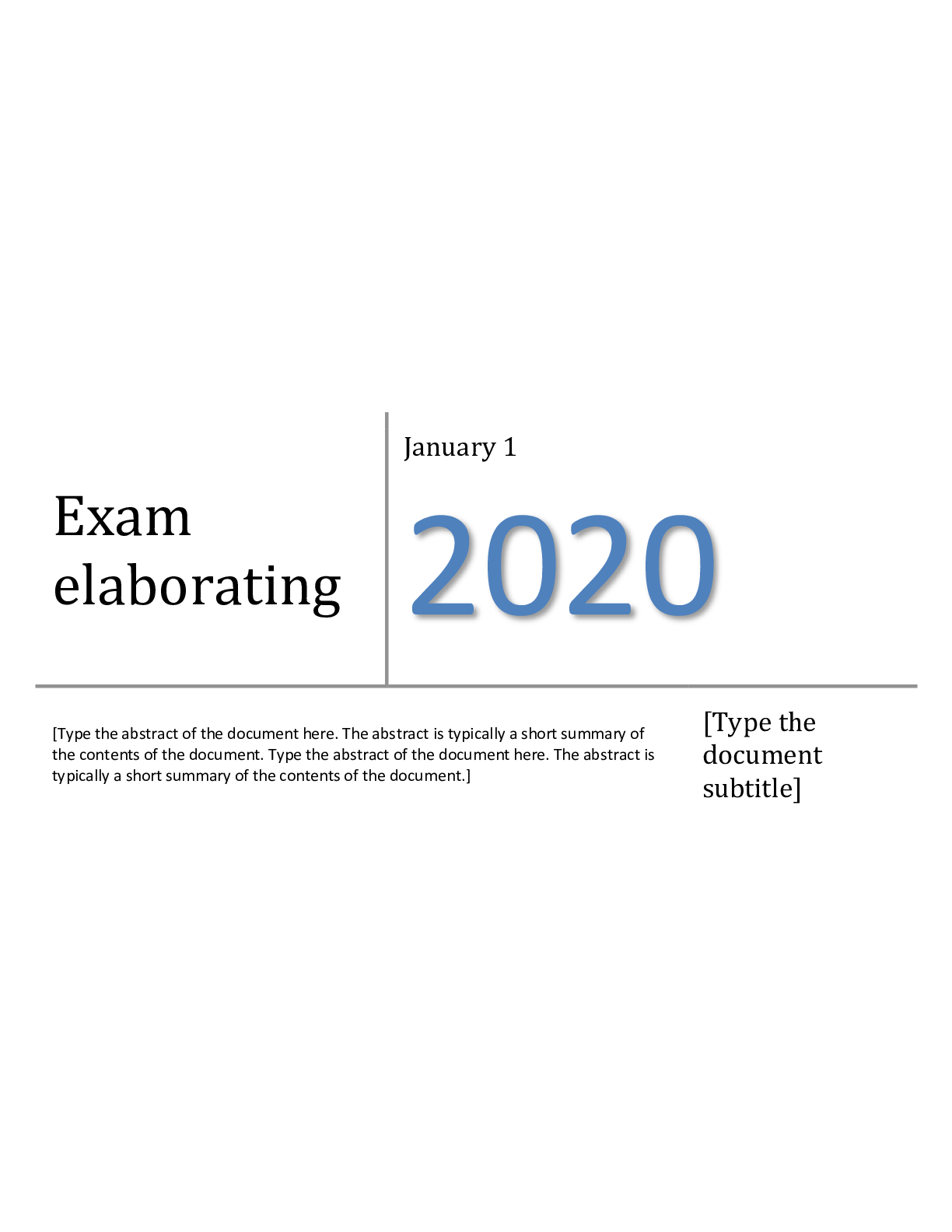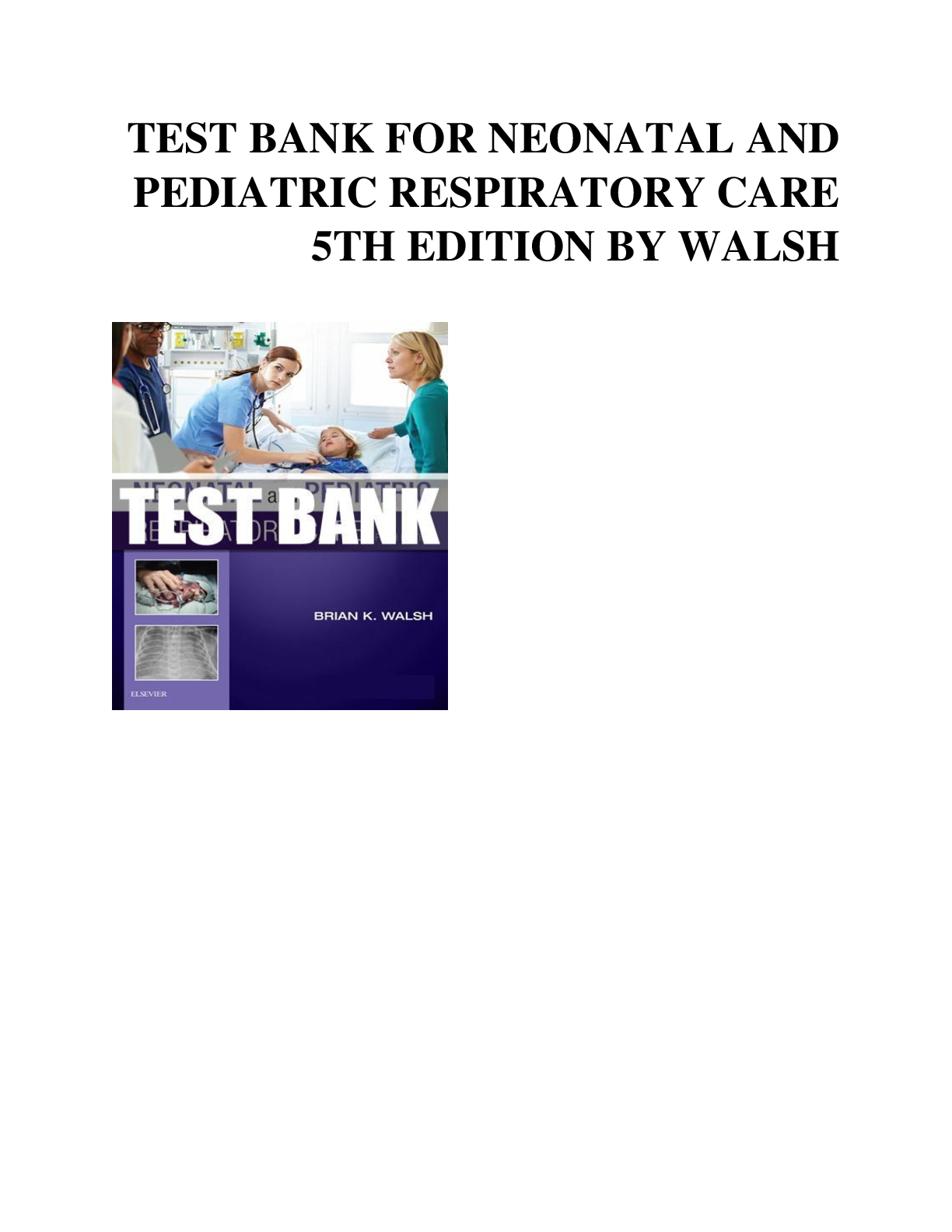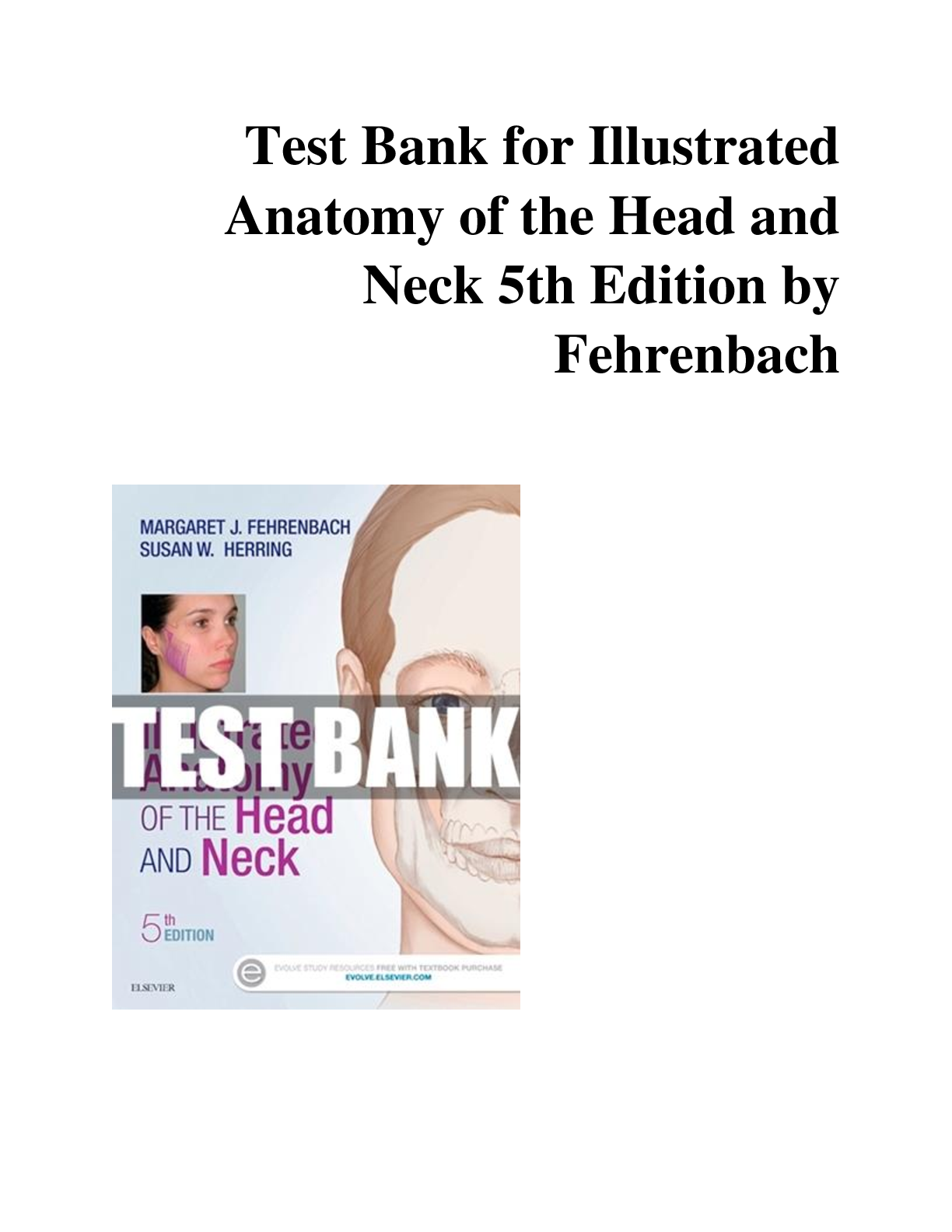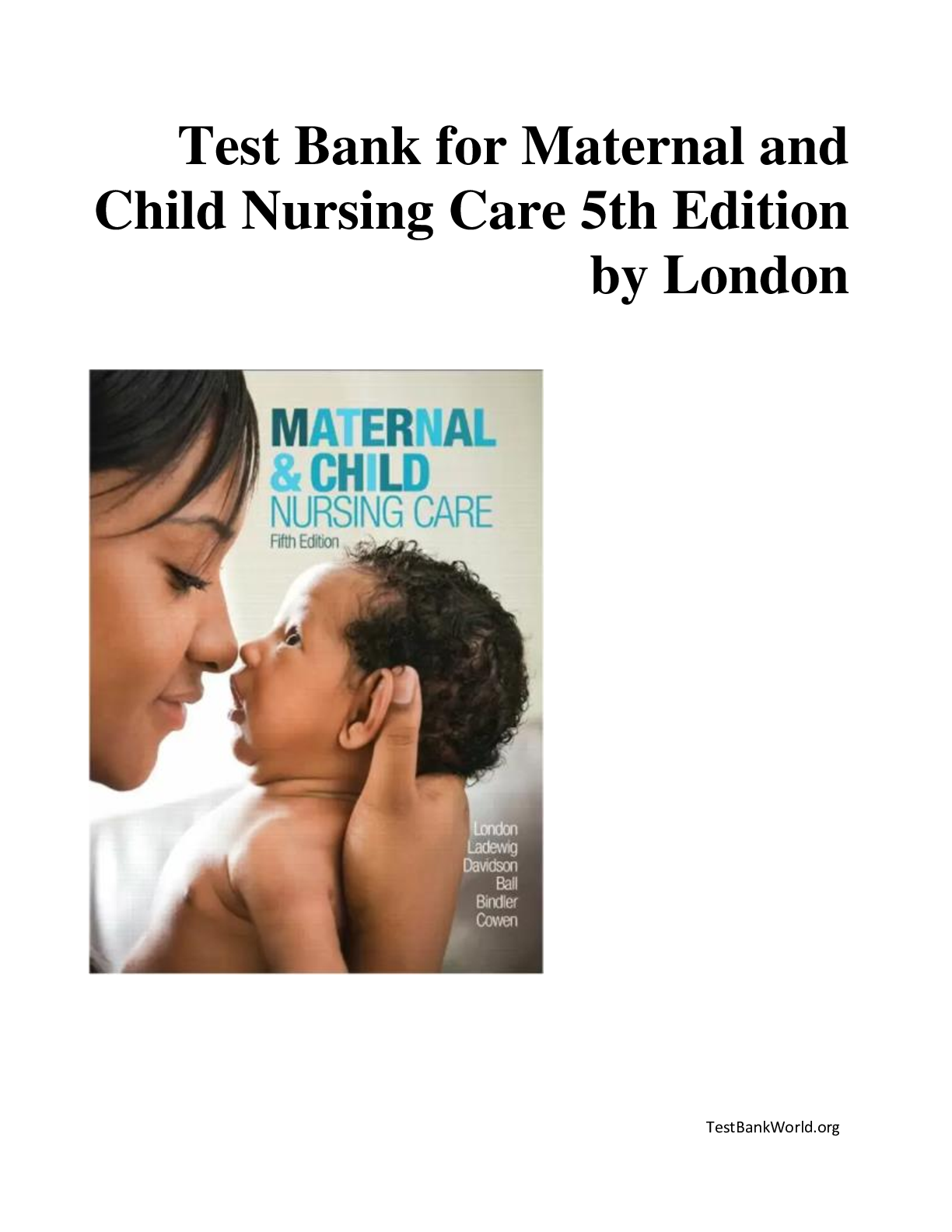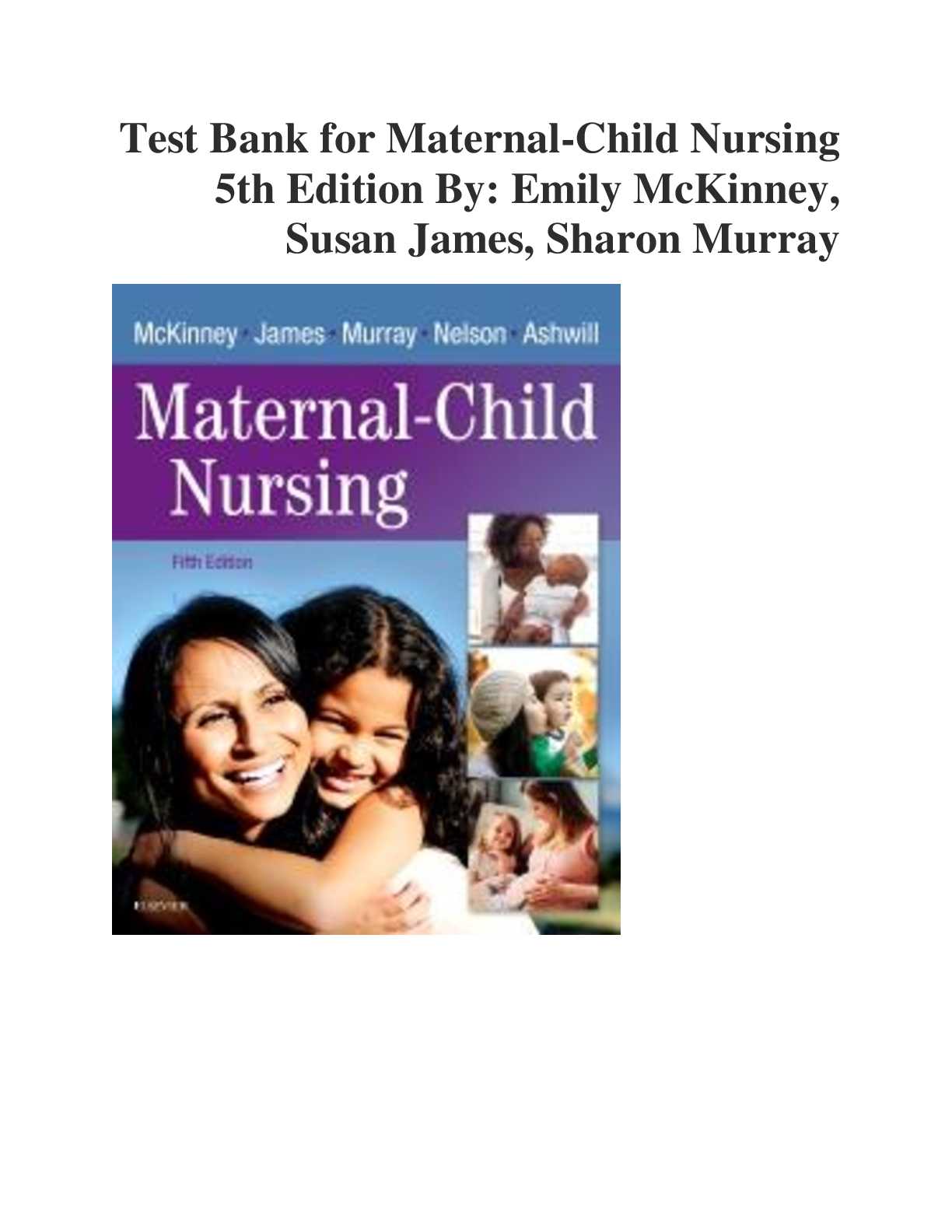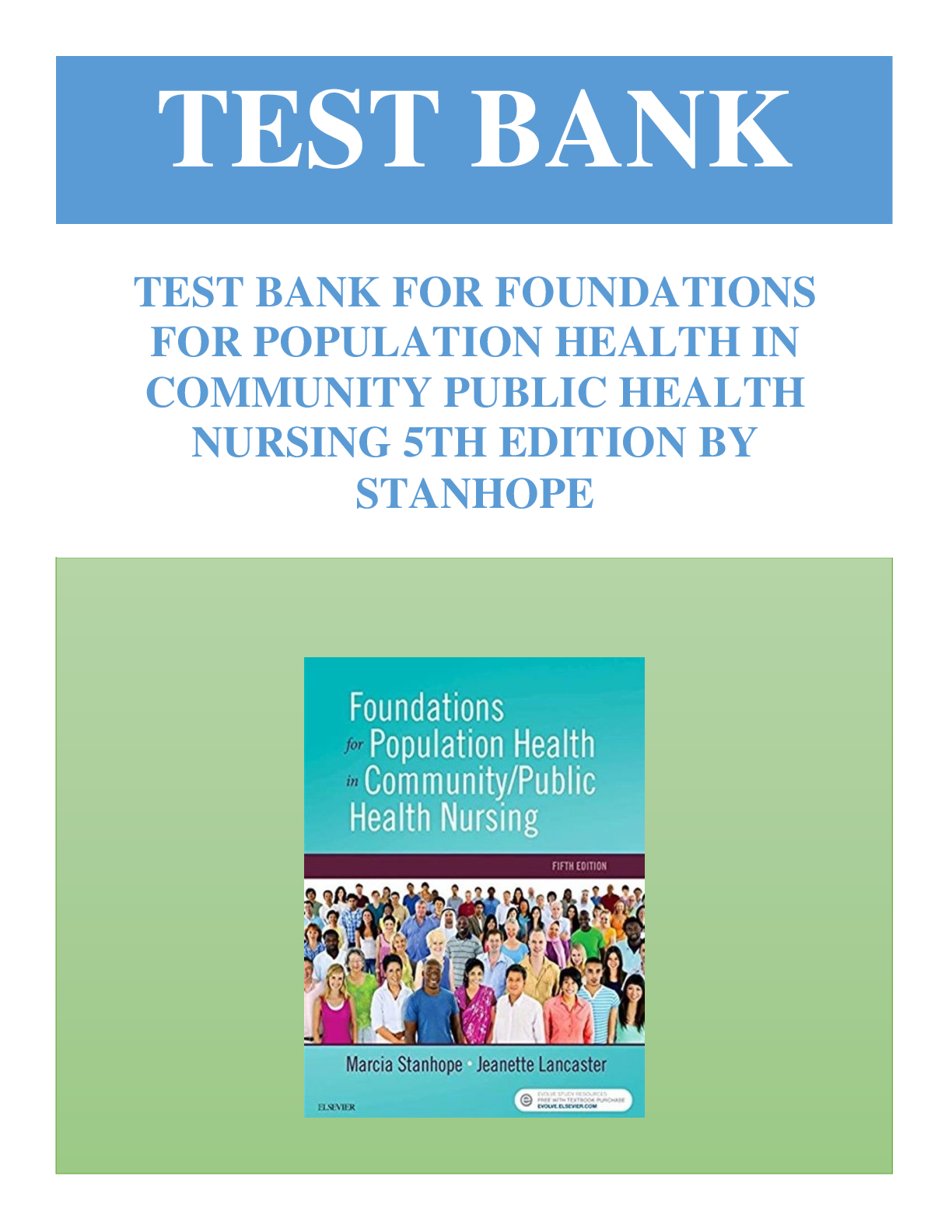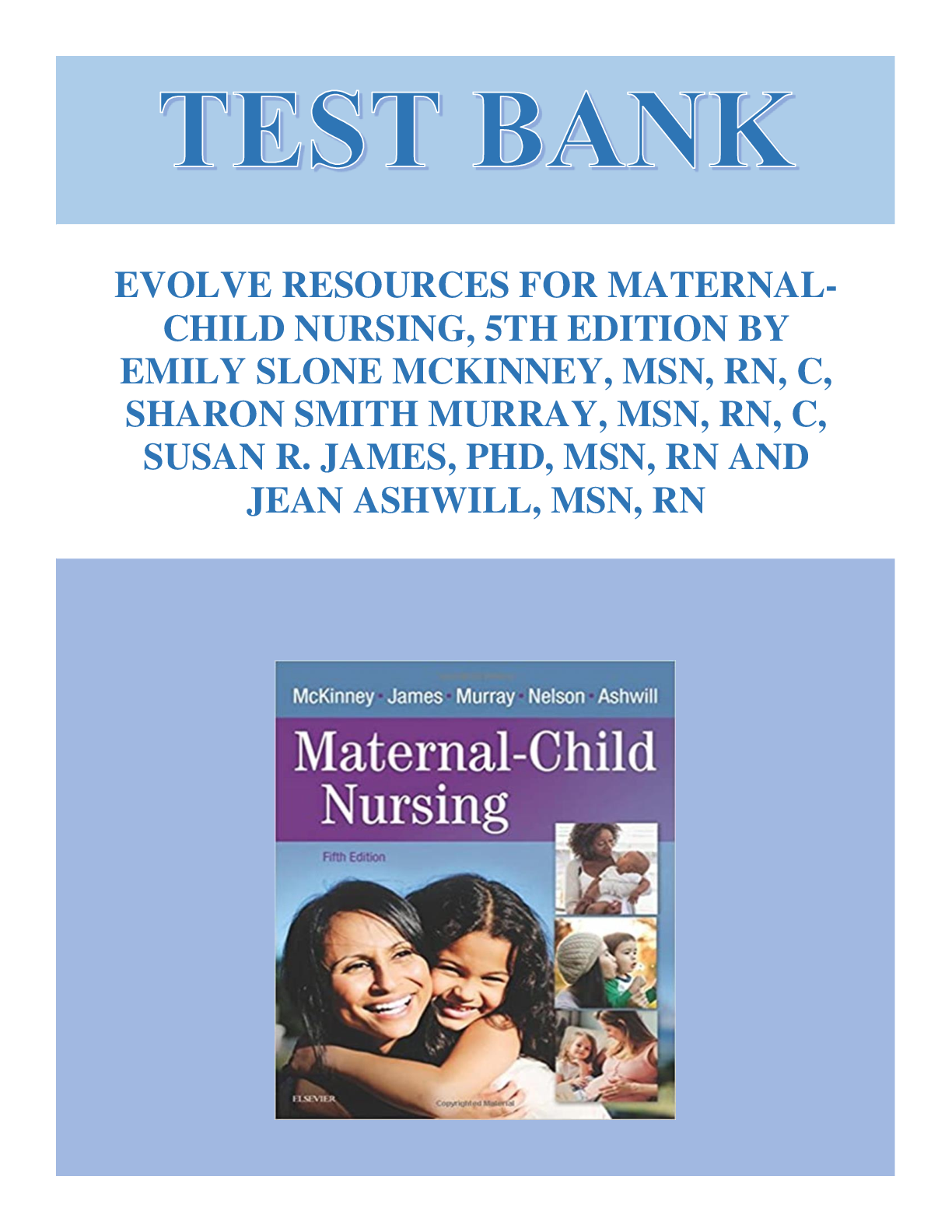Health Care > QUESTIONS & ANSWERS > Test Bank for Maternal & Child Nursing Care, 5th Edition by Marcia L. London (All)
Test Bank for Maternal & Child Nursing Care, 5th Edition by Marcia L. London
Document Content and Description Below
Test Bank for Maternal & Child Nursing Care, 5th Edition by Marcia L. London Contents Part 1: Introduction to Family-Centered Care 1. Contemporary Maternal, Newborn, and Child Health Nursin... g Nursing Roles in Maternal-Child Nursing Family-Centered Maternal-Child Care Access to Health Care Statistical Data and Maternal-Child Care Legal Considerations in Maternal-Child Nursing Ethical Issues in Maternal-Child Nursing Evidence-Based Practice in Maternal-Child Nursing Clinical Reasoning 2. Culture and the Family The Family Cultural Influences Affecting the Family Culture and Nursing Care Complementary and Alternative Therapies and the Family 3. Genetic and Genomic Influences in Maternal, Newborn, and Child Health Genetic Basics Principles of Inheritance Genetic Testing Vision for the Future Part 2: Women’s Health 4. Reproductive Anatomy and Physiology Physiology of Onset of Puberty Female Reproductive System The Female Reproductive Cycle Male Reproductive System 5. Health Promotion for Women Nursing Care in the Community Menstruation Contraception Preconception Counseling Health Promotion for Women Menopause Violence Against Women 6. Common Gynecologic Problems Care of the Woman With a Benign Disorder of the Breast Care of the Woman With Endometriosis Care of the Woman With Polycystic Ovarian Syndrome Care of the Woman With Toxic Shock Syndrome Care of the Woman With a Vaginal Infection Care of the Individual With a Sexually Transmitted Infection Care of the Woman With Pelvic Inflammatory Disease Care of the Woman With an Abnormal Finding During Pelvic Examination Care of the Woman With a Urinary Tract Infection Pelvic Relaxation Care of the Woman Requiring a Hysterectomy Infertility Part 3: Pregnancy and the Family 7. Conception and Fetal Development Cellular Division Gametogenesis The Process of Fertilization Preembryonic Development Twins Development and Functions of the Placenta Development of the Fetal Circulatory System Embryonic and Fetal Development Factors Influencing Embryonic and Fetal Development 8. Physical and Psychologic Changes of Pregnancy Anatomy and Physiology of Pregnancy Signs of Pregnancy Psychologic Response of the Expectant Family to Pregnancy Cultural Values and Pregnancy 9. Antepartum Nursing Assessment Initial Client History Initial Prenatal Assessment Assessment of Pelvic Adequacy (Clinical Pelvimetry) Subsequent Client History Subsequent Prenatal Assessment 10. The Expectant Family: Needs and Care Nursing Care During the Prenatal Period Care of the Pregnant Woman’s Family Cultural Considerations in Pregnancy Childbearing Decisions Classes for Family Members During Pregnancy Common Discomforts of Pregnancy Health Promotion During Pregnancy 11. Maternal Nutrition Maternal Weight Gain Nutritional Requirements Vegetarianism Factors Influencing Nutrition Nutritional Care of the Pregnant Adolescent Postpartum Nutrition Community Resources 12. Pregnancy in Selected Populations Adolescent Pregnancy Care of Expectant Parents Over Age 35 Care of the Pregnant Woman With Special Needs 13. Assessment of Fetal Well-Being Maternal Assessment of Fetal Activity Ultrasound First-Trimester Combined Screening Cell-Free Fetal DNA Testing Doppler Blood Flow Studies (Umbilical Velocimetry) Non-Stress Test Fetal Acoustic and Vibroacoustic Stimulation Tests Biophysical Profile Contraction Stress Test Amniotic Fluid Analysis Chorionic Villus Sampling 14. Pregnancy at Risk: Pregestational Problems Care of the Woman With Diabetes Mellitus Care of the Woman With Anemia Care of the Woman With Substance Abuse Problems Care of the Woman With a Psychologic Disorder Care of the Woman With HIV Infection Care of the Woman With Heart Disease Other Medical Conditions and Pregnancy 15. Pregnancy at Risk: Gestational Onset Care of the Woman With a Bleeding Disorder Care of the Woman With Hyperemesis Gravidarum Care of the Woman With a Hypertensive Disorder Care of the Woman With a Perinatal Infection Affecting the Fetus Care of the Woman Requiring Surgery During Pregnancy Care of the Woman Suffering Major Trauma Care of the Pregnant Woman Who Has Experienced Domestic Violence Care of the Woman at Risk for Rh Alloimmunization Care of the Woman at Risk from ABO Incompatibility Part 4: Birth and the Family 16. Processes and Stages of Labor and Birth Methods of Childbirth Preparation Preparation for Childbirth That Supports Individuality Critical Factors in Labor The Physiology of Labor Stages of Labor and Birth Maternal Systemic Response to Labor Fetal Response to Labor 17. Intrapartum Nursing Assessment Maternal Assessment Fetal Assessment 18. The Family in Childbirth: Needs and Care Nursing Diagnoses During Labor and Birth Nursing Care During the First Stage of Labor Nursing Care During the Second Stage of Labor Nursing Care During the Third and Fourth Stages of Labor Support of the Adolescent During Birth Nursing Care During Precipitous Labor and Birth Evaluation 19. Pharmacologic Pain Management Systemic Medications Regional Anesthesia and Analgesia General Anesthesia 20. Childbirth at Risk: Prelabor and Intrapartum Complications Care of the Woman With Premature Rupture of Membranes Care of the Woman at Risk Because of Preterm Labor Care of the Woman at Risk Because of Bleeding During Pregnancy Care of the Woman With Cervical Insufficiency Care of the Woman With Multiple Gestation Care of the Woman With Abnormal Amniotic Fluid Volume 21. Childbirth at Risk: Labor-Related Complications Care of the Woman With Dystocia Related to Dysfunctional Uterine Contractions Care of the Woman With Postterm Pregnancy Care of the Woman and Fetus at Risk Because of Fetal Malposition Care of the Woman and Fetus at Risk Because of Fetal Malpresentation Care of the Woman and Fetus at Risk for Macrosomia Care of the Woman and Fetus in the Presence of Nonreassuring Fetal Status Care of the Woman and Fetus With a Prolapsed Umbilical Cord Care of the Woman and Fetus at Risk Owing to Anaphylactoid Syndrome of Pregnancy Care of the Woman With Cephalopelvic Disproportion Care of the Woman With a Complication of the Third or Fourth Stage of Labor Care of the Woman and Fetus With Placental Problems Care of the Family Experiencing Perinatal Loss 22. Birth-Related Procedures Care of the Woman During Version Care of the Woman During Amniotomy Care of the Woman During Amnioinfusion Care of the Woman During Cervical Ripening Care of the Woman During Labor Induction Care of the Woman During an Episiotomy Care of the Woman During Forceps-Assisted Birth Care of the Woman During Vacuum-Assisted Birth Care of the Family During Cesarean Birth Care of the Woman Undergoing Trial of Labor After Cesarean (TOLAC) and Vaginal Birth After Cesarean Part 5: The Newborn 23. The Physiologic Responses of the Newborn to Birth Respiratory Adaptations Cardiopulmonary Adaptation Hematopoietic System Temperature Regulation Hepatic Adaptations Gastrointestinal Adaptations Urinary Tract Adaptations Immunologic Adaptations Neurologic Adaptation 24. Nursing Assessment of the Newborn Timing of Newborn Assessments Estimation of Gestational Age Physical Assessment 25. The Normal Newborn: Needs, Care, and Feeding Admission and the First 4 Hours of Life The Newborn Following Transition Newborn Feeding Choice of Feeding: Breast Versus Formula Breastfeeding Formula Feeding Promotion of Successful Newborn Breastfeeding Preparation for Discharge 26. The Newborn at Risk: Conditions Present at Birth Identification of At-Risk Newborns Care of the Small-for-Gestational-Age/Intrauterine Growth Restriction Newborn Care of the Large-for-Gestational-Age (LGA) Newborn Care of the Infant of a Diabetic Mother Care of the Postterm Newborn Care of the Preterm (Premature) Newborn Care of the Newborn With Congenital Anomalies Care of the Infant of a Substance-Abusing Mother Care of the Newborn Exposed to HIV/AIDS Care of the Newborn With a Congenital Heart Defect 27. The Newborn at Risk: Birth-Related Stressors Care of the Newborn at Risk From Asphyxia Care of the Newborn With Respiratory Distress Care of the Newborn With Cold Stress Care of the Newborn With Hypoglycemia Care of the Newborn With Jaundice Care of the Newborn With Anemia Care of the Newborn With Infection Care of the Family With Birth of an At-Risk Newborn Part 6: The Postpartum Family 28. Postpartum Adaptation and Nursing Assessment Postpartum Physical Adaptations Postpartum Psychologic Adaptations Development of Family Attachment Postpartum Nursing Assessment Discharge Assessment and Follow-Up 29. The Postpartum Family: Early Care Needs and Home Care Nursing Care During the Early Postpartum Period Promotion of Maternal Comfort and Well-Being Promotion of Maternal Rest and Activity Promotion of Effective Parent Learning Promotion of Family Wellness Nursing Care Following Cesarean Birth Nursing Care of the Postpartum Adolescent Nursing Care of the Woman Who Relinquishes Her Baby Postpartum Care for Special Populations Preparation for Discharge Considerations for the Home Visit Home Care: The Mother and Family Home Care: The Newborn Postpartum Classes and Support Groups 30. The Postpartum Family at Risk Care of the Woman With Postpartum Hemorrhage Care of the Woman With a Reproductive Tract Infection or Wound Infection Care of the Woman With a Urinary Tract Infection Care of the Woman With Mastitis Care of the Woman With Postpartum Thromboembolic Disease Care of the Woman With a Postpartum Psychiatric Disorder Part 7: Care and Needs of Children 31. Growth and Development Principles of Growth and Development Major Theories of Development Influences on Development Infant (Birth to 1 Year) Toddler (1 to 3 Years) Preschool Child (3 to 6 Years) School-Age Child (6 to 12 Years) Adolescent (12 to 18 Years) 32. Infant, Child, and Adolescent Nutrition General Nutrition Concepts Nutritional Needs Nutritional Assessment Common Nutritional Concerns Nutritional Support 33. Pediatric Assessment Anatomic and Physiologic Characteristics of Infants and Children Obtaining the Child’s History General Appraisal Assessing Skin and Hair Characteristics Assessing the Head for Skull Characteristics and Facial Features Assessing Eye Structures, Function, and Vision Assessing the Ear Structures and Hearing Assessing the Nose and Sinuses for Airway Patency and Discharge Assessing the Mouth and Throat for Color, Function, and Signs of Abnormal Conditions Assessing the Neck for Characteristics, Range of Motion, and Lymph Nodes Assessing the Chest for Shape, Movement, Respiratory Effort, and Lung Function Assessing the Breasts Assessing the Heart for Heart Sounds and Function Assessing the Abdomen for Shape, Bowel Sounds, and Underlying Organs Assessing the Genital and Perineal Areas for External Structural Abnormalities Assessing Pubertal Development and Sexual Maturation Assessing the Musculoskeletal System for Bone and Joint Structure, Movement, and Muscle Strength Assessing the Nervous System Performing an Intermittent Examination Analyzing Data From the Physical Examination 34. Health Promotion and Maintenance: General Concepts, the Newborn, and the Infant General Concepts Components of Health Promotion/Health Maintenance Visits Health Promotion and Maintenance of the Newborn and Infant 35. Health Promotion and Maintenance: The Toddler and the Preschooler Health Promotion and Maintenance: The Toddler and Preschooler 36. Health Promotion and Maintenance: The School-Age Child and the Adolescent Health Promotion and Maintenance: The School-Age Child Health Promotion and Maintenance: The Adolescent 37. Family Assessment and Concepts of Nursing Care in the Community Family Assessment Community-Based Health Care Community Healthcare Settings Preparation for Disasters 38. Nursing Considerations for the Child and Family With a Chronic Condition Overview of Chronic Conditions Role of the Nurse Community Sites of Care 39. Nursing Considerations for the Hospitalized Child Effects of Hospitalization on Children and Their Families Nurse’s Role in the Child’s Adaptation to Hospitalization Nursing Care of the Hospitalized Child Strategies to Promote Coping and Normal Development of the Hospitalized Child Preparation for Home Care 40. Pain Assessment and Management in Children Pain Pain Assessment Acute Pain Chronic Pain Sedation and Analgesia for Medical Procedures 41. The Child With a Life-Threatening Condition and End-of-Life Care Life-Threatening Illness or Injury Child’s Experience Parents’ Experience of a Child’s Life-Threatening Illness or Injury The Siblings’ Experience End-of-Life Care Ethical Issues Surrounding a Child’s Death Care of the Dying Child Bereavement 42. Social and Environmental Influences on the Child Basic Concepts Social Influences on Child Health Lifestyle Activities and Their Influence on Child Health Effects of Violence Child Abuse Environmental Influences on Child Health 43. Immunizations and Communicable Diseases Special Vulnerability of Infants and Children Public Health and Communicable Diseases Immunization Communicable Diseases in Children Sepsis and Septic Shock Emerging Infection Control Threats Part 8: Caring for Children with Alterations in Health Status 44. The Child With Alterations in Fluid, Electrolyte, and Acid–Base Balance Anatomy and Physiology of Pediatric Differences Extracellular Fluid Volume Imbalances Sodium Imbalances Potassium Imbalances Calcium Imbalances Magnesium Imbalances Physiology of Acid–Base Balance Acid–Base Imbalances 45. The Child With Alterations in Eye, Ear, Nose, and Throat Function Anatomy and Physiology of Pediatric Differences Disorders of the Eye Disorders of the Ear Disorders of the Nose and Throat Disorders of the Mouth 46. The Child With Alterations in Respiratory Function Anatomy and Physiology of Pediatric Differences Respiratory Distress and Respiratory Failure Apnea Croup Syndromes Lower Airway Disorders Chronic Lung Diseases Injuries of the Respiratory System 47. The Child With Alterations in Cardiovascular Function Anatomy and Physiology of Pediatric Differences Congenital Heart Disease Congenital Heart Defects That Increase Pulmonary Blood Flow Defects Causing Decreased Pulmonary Blood Flow and Mixed Defects Defects Obstructing Systemic Blood Flow Congestive Heart Failure Acquired Heart Diseases Injuries of the Cardiovascular System 48. The Child With Alterations in Immune Function Anatomy and Physiology of Pediatric Differences Immunodeficiency Disorders Autoimmune Disorders Allergic Reactions Graft-Versus-Host Disease 49. The Child With Alterations in Hematologic Function Anatomy and Physiology of Pediatric Differences Anemias Bleeding Disorders Hematopoietic Stem Cell Transplantation 50. The Child With Cancer Anatomy and Physiology of Pediatric Differences Childhood Cancer Solid Tumors Bone Tumors Leukemia Soft-Tissue Tumors 51. The Child With Alterations in Gastrointestinal Function Anatomy and Physiology of Pediatric Differences Structural Defects Ostomies Inflammatory Disorders Disorders of Motility Intestinal Parasitic Disorders Disorders of Malabsorption Hepatic Disorders Injuries to the Gastrointestinal System 52. The Child With Alterations in Genitourinary Function Anatomy and Physiology of Pediatric Differences Urinary Tract Infection Structural Defects of the Urinary System Enuresis Renal Disorders Renal Failure Structural Defects of the Reproductive System 53. The Child With Alterations in Endocrine Function Anatomy and Physiology of Pediatric Differences Disorders of Pituitary Function Disorders of Thyroid Function Disorders of the Parathyroid Disorders of Adrenal Function Disorders of Pancreatic Function Disorders of Gonadal Function Disorders Related to Sex Chromosome Abnormalities Inborn Errors of Metabolism 54. The Child With Alterations in Neurologic Function Anatomy and Physiology of Pediatric Differences Altered States of Consciousness Seizure Disorders Infectious Diseases Headaches Structural Defects Cerebral Palsy Injuries of the Neurologic System 55. The Child With Alterations in Mental Health and Cognitive Function Mental Health Alterations of Children and Adolescents Developmental and Behavioral Disorders Mood Disorders Anxiety and Related Disorders Other Disorders Cognitive Alterations 56. The Child With Alterations in Musculoskeletal Function Anatomy and Physiology of Pediatric Differences Disorders of the Feet and Legs Disorders of the Hip Disorders of the Spine Additional Disorders of the Bones and Joints Muscular Dystrophies Injuries to the Musculoskeletal System 57. The Child With Alterations in Skin Integrity Skin Lesions Wound Healing Dermatitis Bacterial Infections Viral Infections Fungal Infections Drug Reactions Chronic Skin Conditions Infestations Vascular Tumors (Hemangiomas) Injuries to the Skin [Show More]
Last updated: 1 year ago
Preview 1 out of 1002 pages
Instant download

Buy this document to get the full access instantly
Instant Download Access after purchase
Add to cartInstant download
Reviews( 0 )
Document information
Connected school, study & course
About the document
Uploaded On
Sep 07, 2021
Number of pages
1002
Written in
Additional information
This document has been written for:
Uploaded
Sep 07, 2021
Downloads
0
Views
59

 AANP-FNP LIGHTNING ROUND REVIEW-2.png)
 MACROECONOMICS QUESTIONS AND ANSWERS.png)
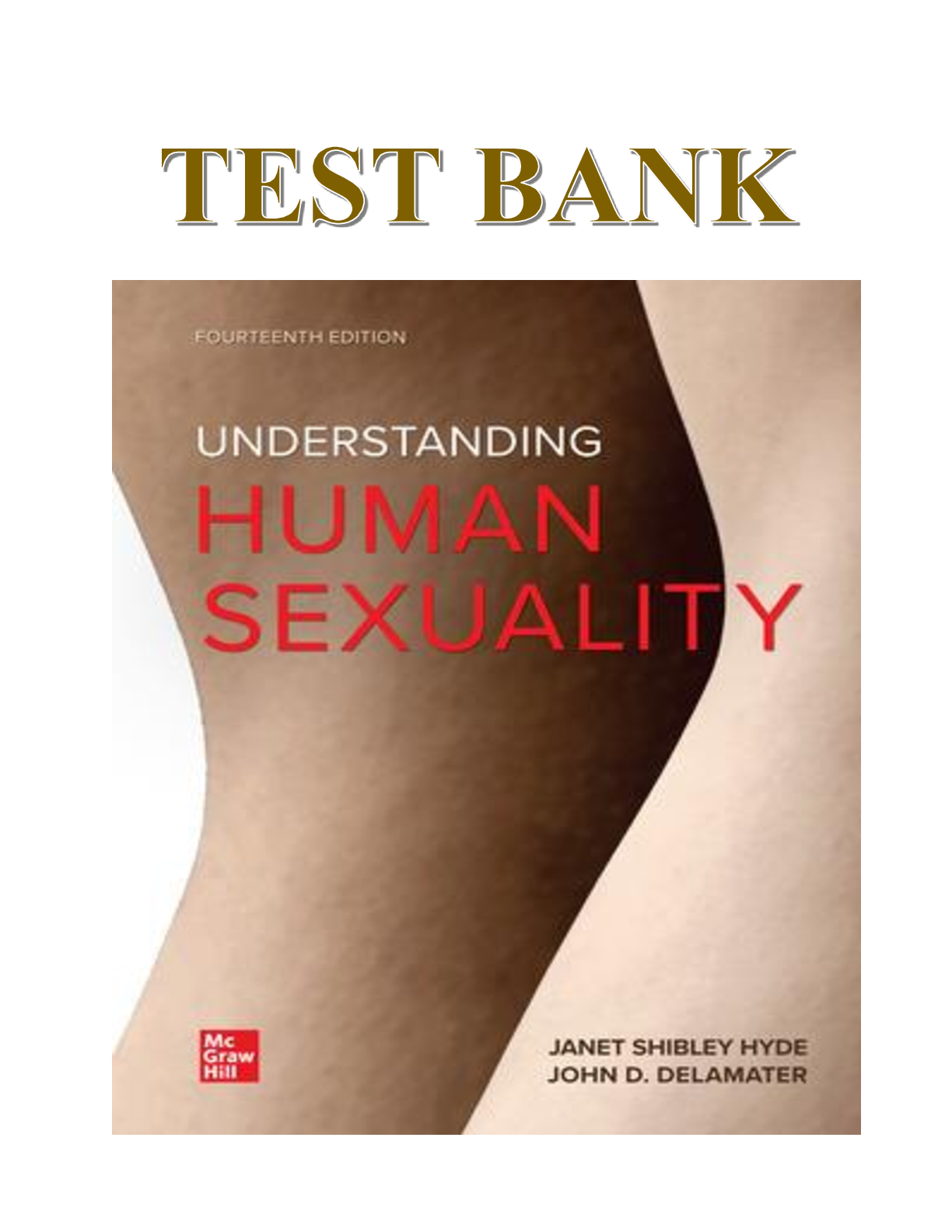
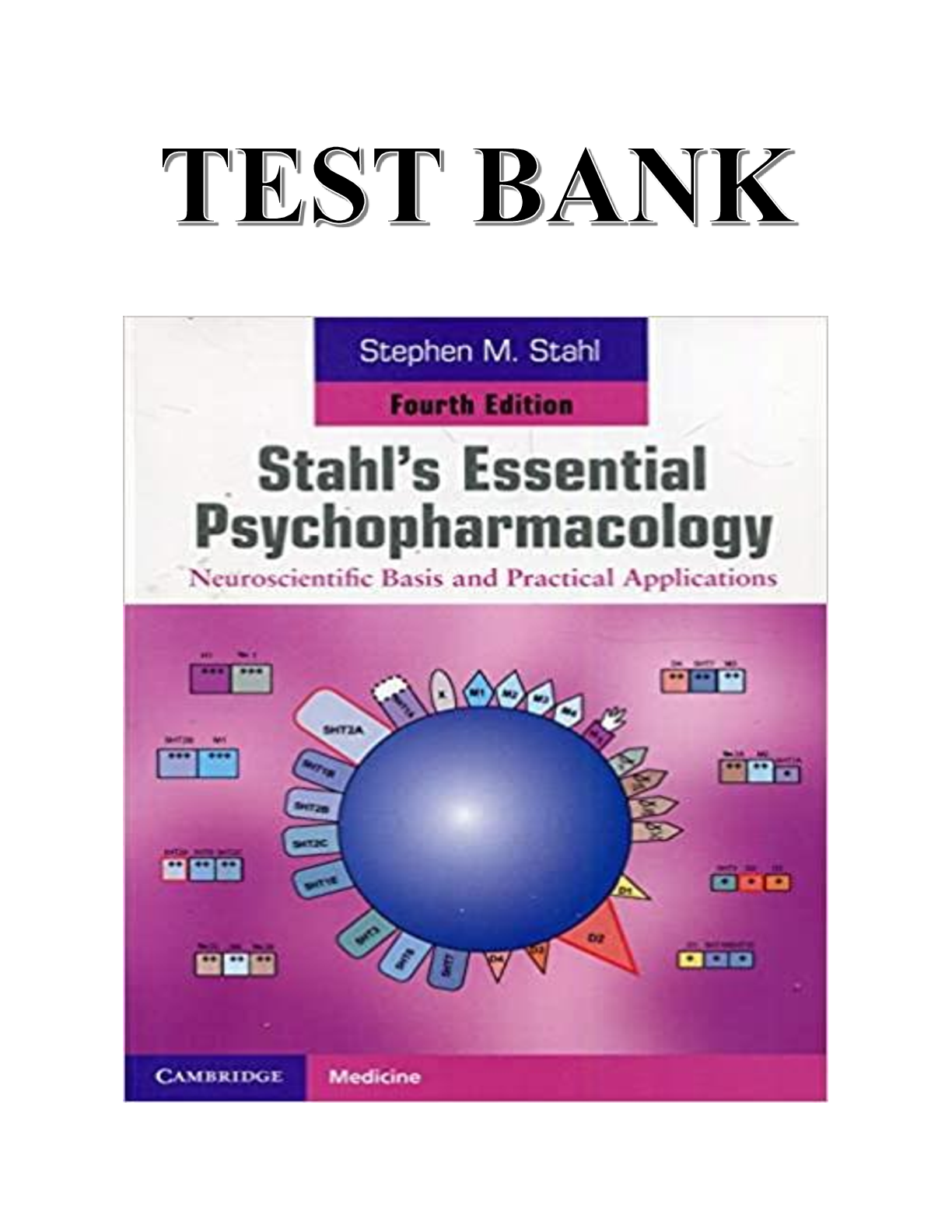
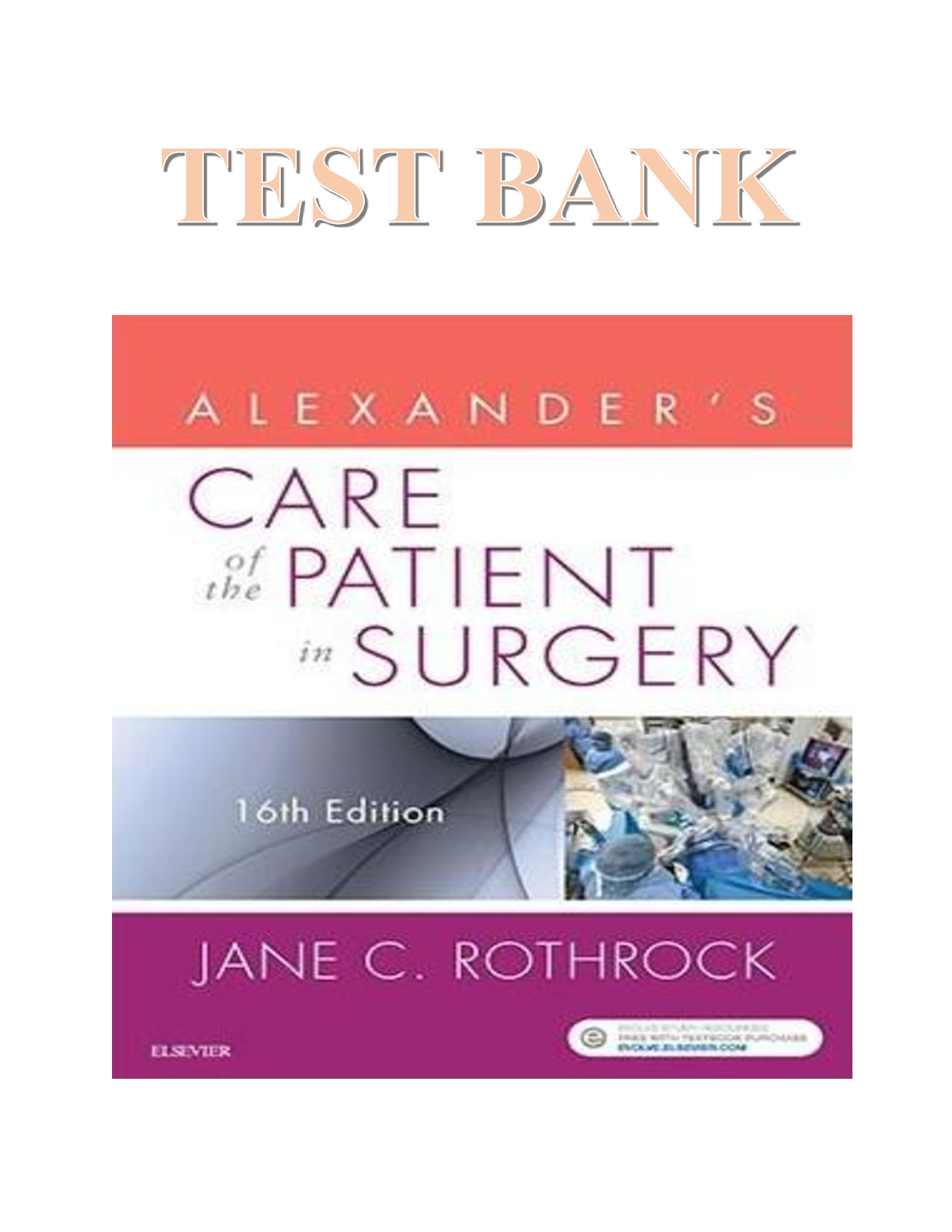
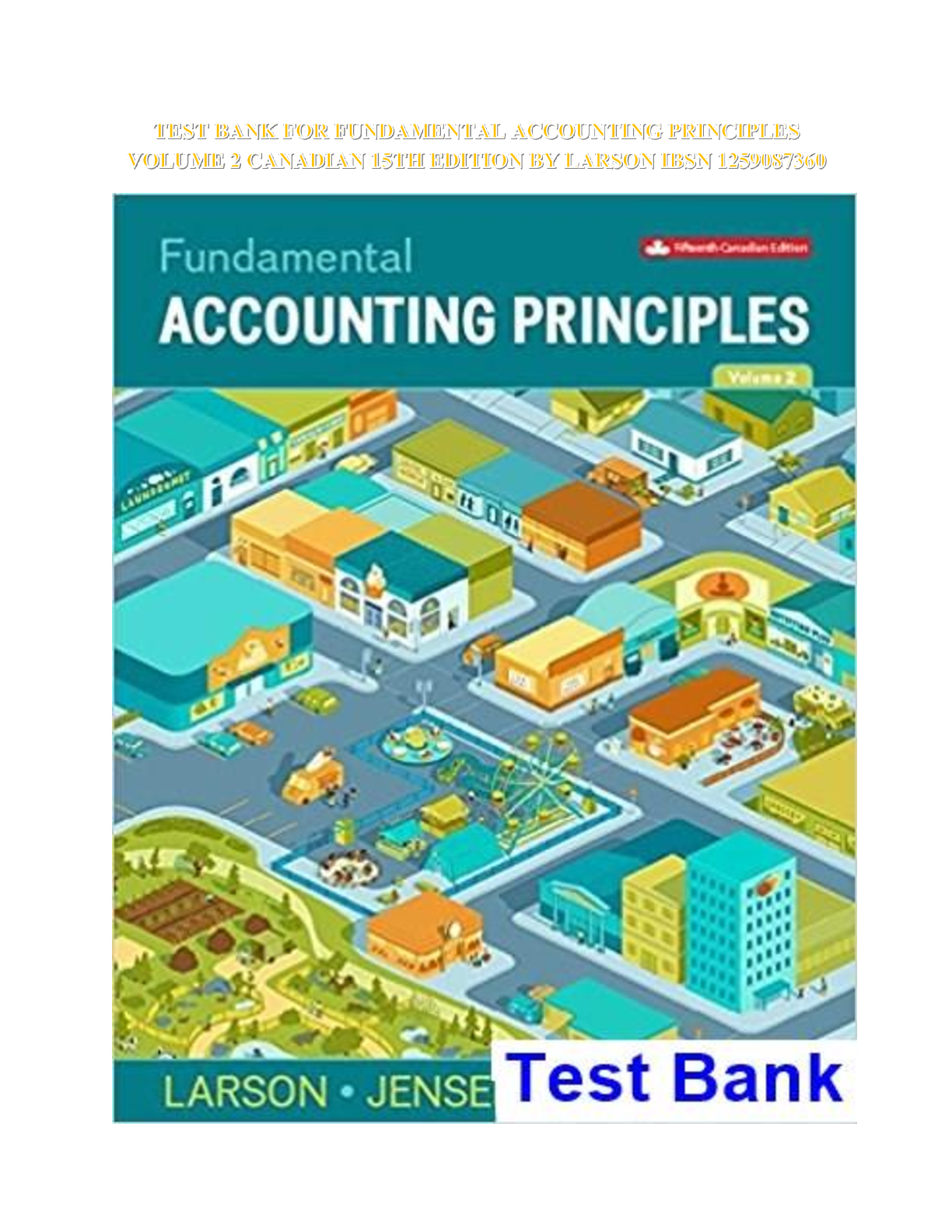
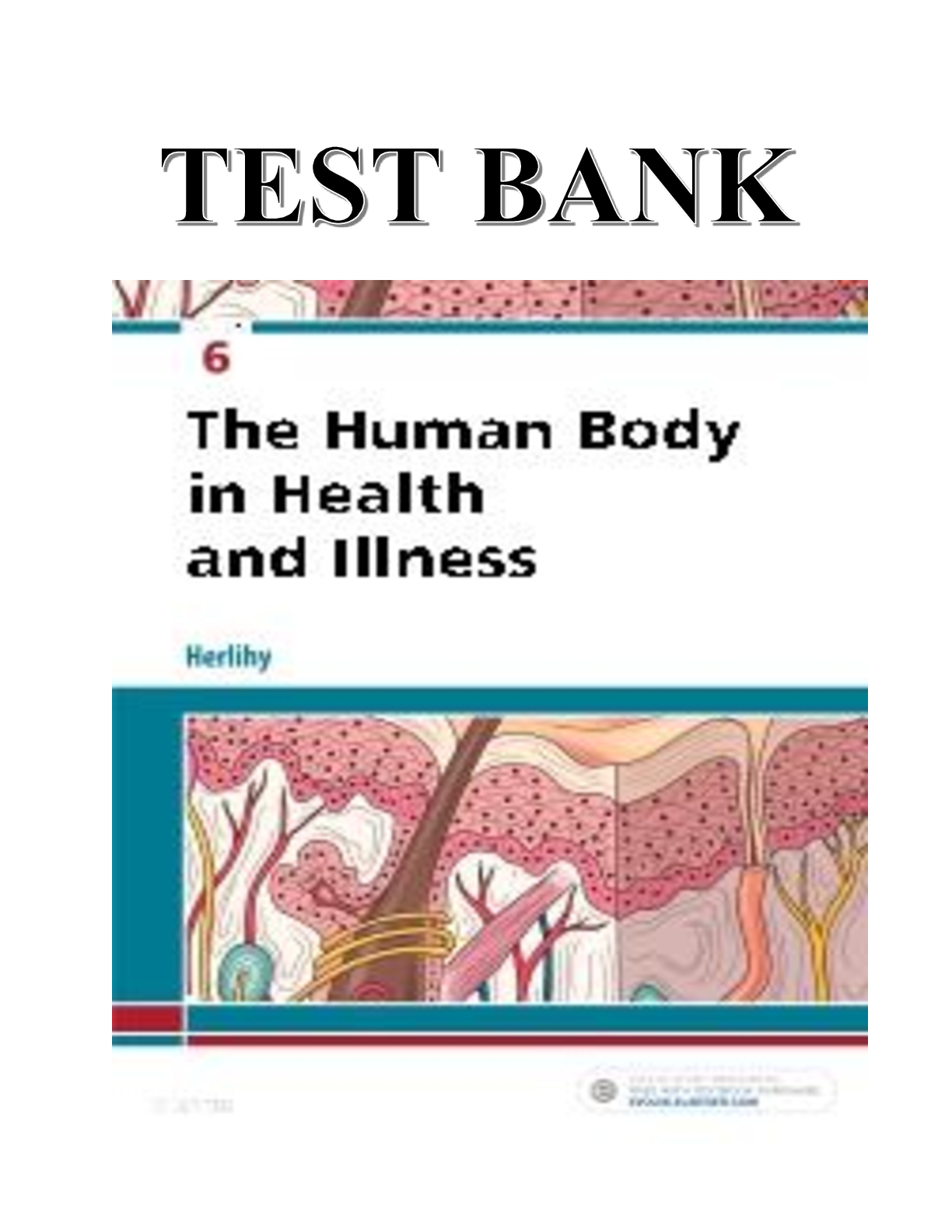
 W2 SH [TRANSCRIPT] – ASTHMA - RESPIRATORY COMPLETED SHADOW HEALTH.png)
